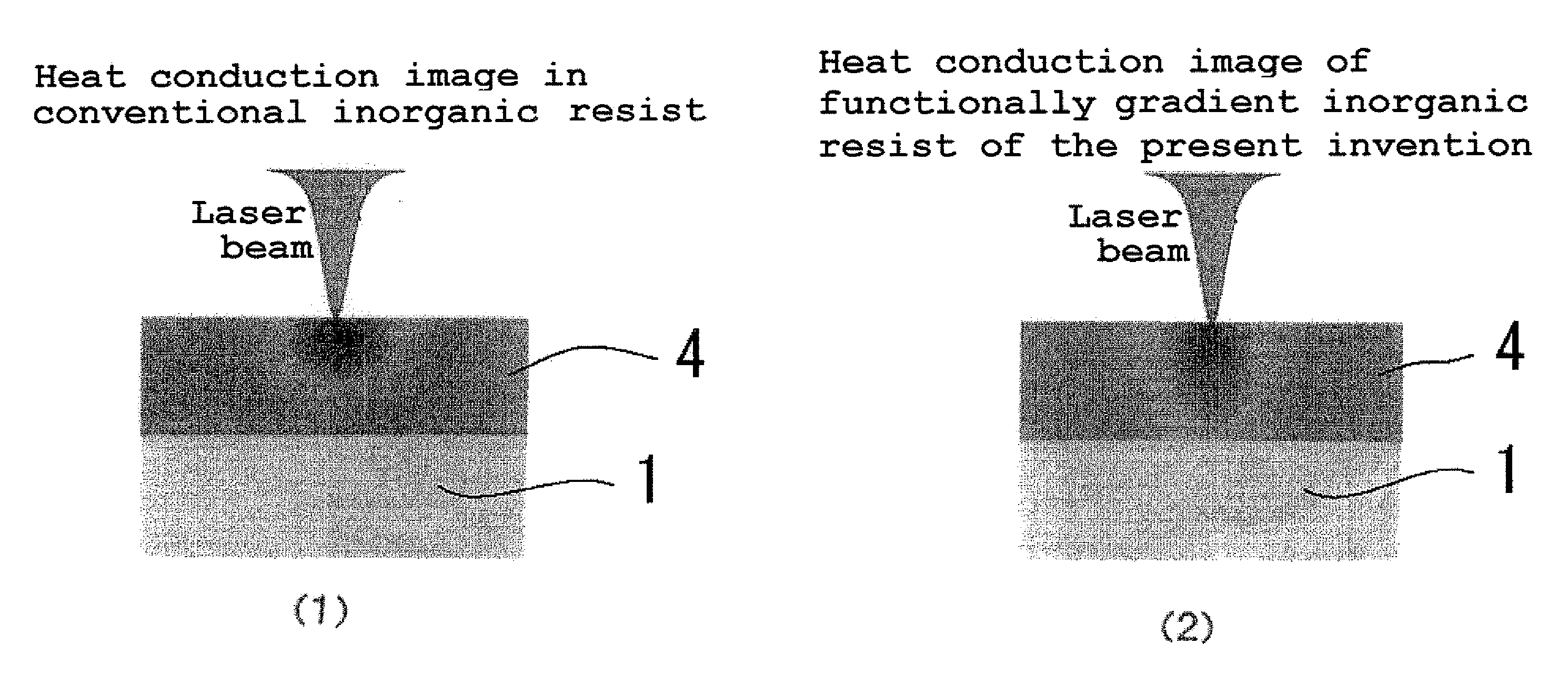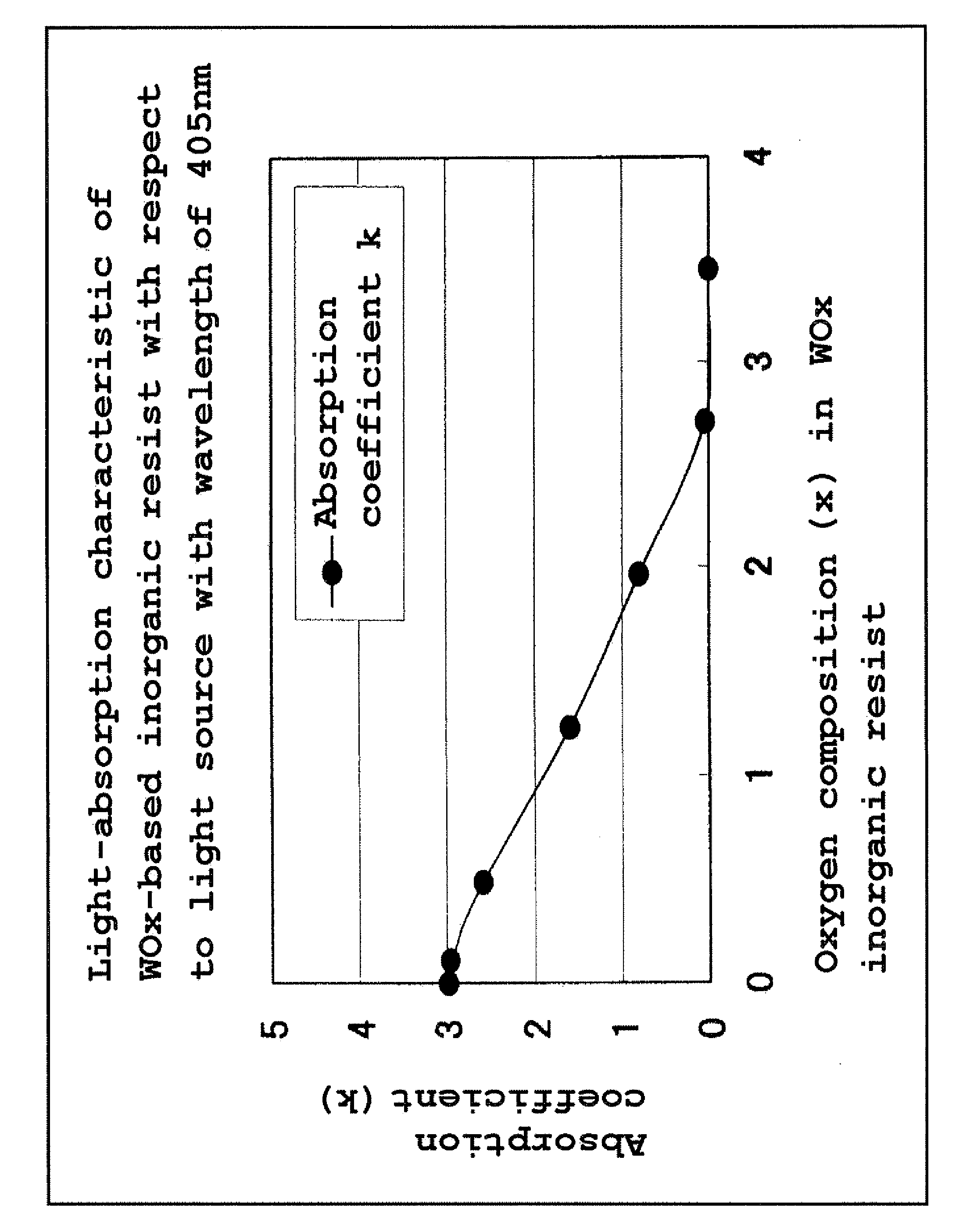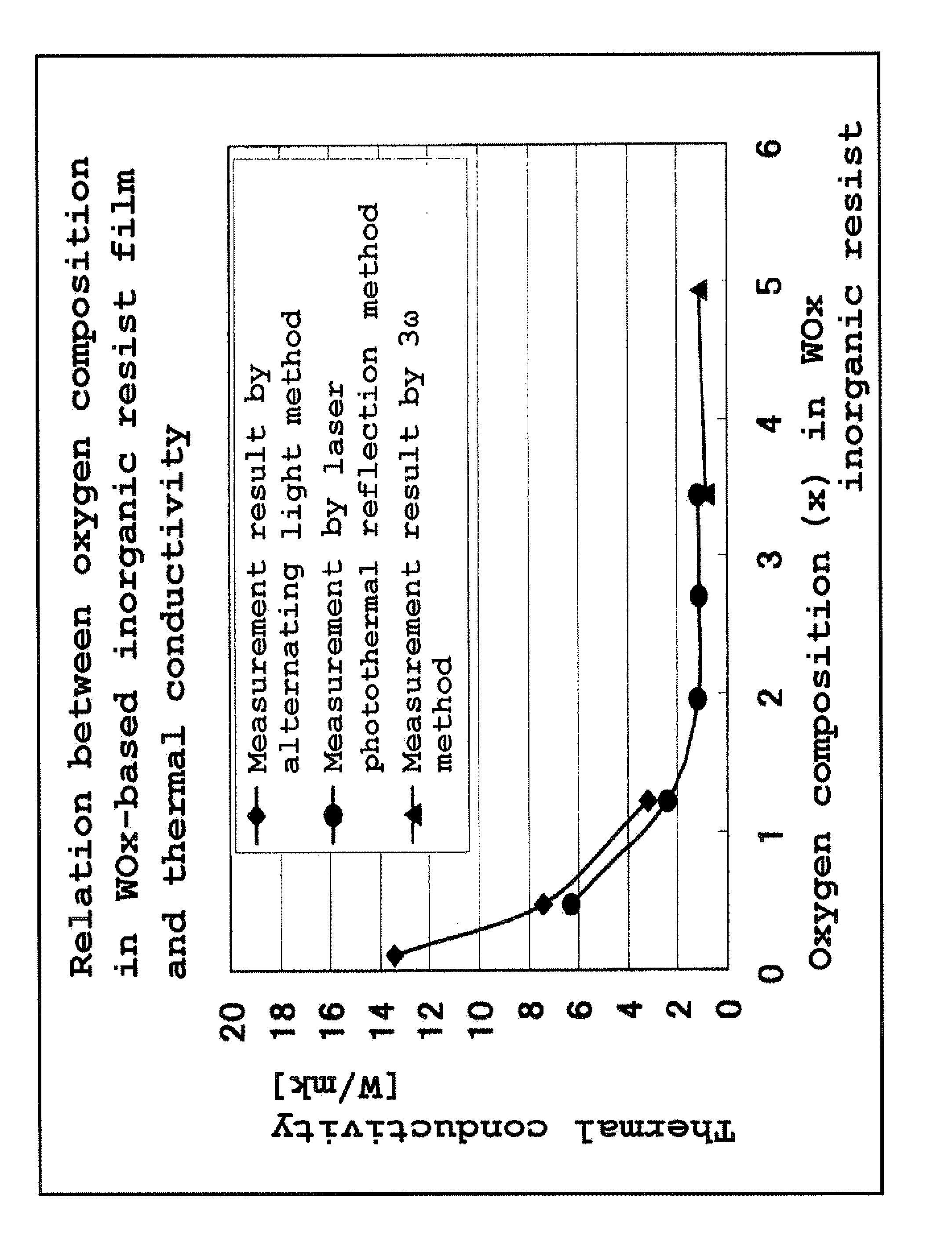Functionally gradient inorganic resist, substrate with functionally gradient inorganic resist, cylindrical base material with functionally gradient inorganic resist, method for forming functionally gradient inorganic resist and method for forming fine pattern, and inorganic resist and method for forming the same
a technology of inorganic resist and functional gradient, which is applied in the direction of photosensitive materials, instruments, photomechanical apparatuses, etc., can solve the problems of low production yield, achieve high production efficiency, improve resist resolution at the time of thermal lithography using focused laser beam, and achieve low cost
- Summary
- Abstract
- Description
- Claims
- Application Information
AI Technical Summary
Benefits of technology
Problems solved by technology
Method used
Image
Examples
embodiment 1
[0156]An embodiment of the present invention will be described hereafter.
[0157]The embodiment of the present invention will be described in the following order.
1. Outline of the functionally gradient inorganic resist
2. Details of the functionally gradient inorganic resist
[0158]1) Composition
[0159]2) Resist resolution characteristic value
[0160]i) Prediction of resist composition for the present invention from the correlation of a resist resolution characteristic and resist composition
[0161]ii) Resist sensitivity
[0162]iii) Optical characteristic (optical-absorption coefficient)
[0163]iv) Thermal characteristic (thermal conductivity)
[0164]3) Film thickness
[0165]4) Structure
3. Outline of a substrate with functionally gradient inorganic resist
4. Details of a substrate with functionally gradient inorganic resist
[0166]1) Substrate (base material)
[0167]2) Ground layer
[0169]4) Inorganic resist
5. A method for manufacturing the substrate with functionally gradient ino...
second embodiment
[0342]A technical range of the present invention is not limited to the aforementioned embodiment, and includes various modifications and improvements within a range capable of deriving a specific effect obtained by constituting features of the present invention and a combination thereof.
[0343]Modified examples of the embodiment 1 will be described hereafter in detail. Note that in the embodiments described hereafter, a portion not particularly specified is the same as that of the embodiment 1.
[0344]In this embodiment, the functionally gradient resist material comprises a first material composed of at least one of suboxide, nitride, or suboxinitride of Ti, V, Cr, Mn, Cu, Zn, Ge, Se, Y, Zr, Nb, Mo, Tc, Ru, Rh, Pd, Ag, Sb, Te, Hf, Ta, W, Re, Ir, Pt, Au, and Bi, and a second material composed of at least one of the above elements excluding the first material.
[0345]Then, compositions of the first material and the second material are relatively and continuously varied from the main surfac...
embodiment 3
[0349]Although the substrate 1 is used in the embodiment 1, in this embodiment, explanation will be given for a case that a cylinder-shaped base material (also called a cylindrical base material hereafter) is used instead of the substrate 1.
[0350]In this embodiment, the ground layer 2 is formed on the surface of the cylindrical base material, and the functionally gradient inorganic resist 4 is formed on the ground layer 2. Then, the cylindrical base material with resist is precisely set on the rotary stage of the laser drawing device. Subsequently, drawing or exposure and development are implemented on the inorganic resist 4 so as to be patterned into a desired shape, by the thermal lithography using the focused laser beams having an automatic focusing function, while rotating the cylindrical base material with resist. Then, the resist pattern 5 is transferred to the ground layer 2 by etching, and the pattern of the ground layer 2 is formed on the cylindrical base material.
[0351]Fur...
PUM
 Login to View More
Login to View More Abstract
Description
Claims
Application Information
 Login to View More
Login to View More - R&D
- Intellectual Property
- Life Sciences
- Materials
- Tech Scout
- Unparalleled Data Quality
- Higher Quality Content
- 60% Fewer Hallucinations
Browse by: Latest US Patents, China's latest patents, Technical Efficacy Thesaurus, Application Domain, Technology Topic, Popular Technical Reports.
© 2025 PatSnap. All rights reserved.Legal|Privacy policy|Modern Slavery Act Transparency Statement|Sitemap|About US| Contact US: help@patsnap.com



